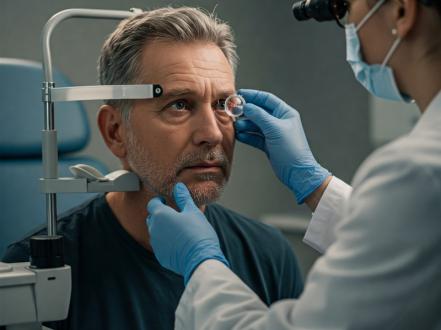Strabismus refers to an eye condition recognized by a misalignment of the eyes, leading to an inability to maintain simultaneous, binocular vision. Often referred to as cross-eyed or squint, it influences an individual's ability to align both eyes towards the same fixation point simultaneously, which usually results in the affected eye pointing in a different direction than the other. This condition predominantly impacts younger children, but it can affect adults too.
Strabismus is generally classified into two categories. The first is congenital or early-onset strabismus that is noticed in infants and young children. The second is acquired strabismus, which develops later in childhood or adulthood. Depending on the direction of eye turn, strabismus is further classified as esotropia (inward turn), exotropia (outward turn), hypertropia (upward turn), and hypotropia (downward turn). It is not just a cosmetic problem, but a functional one. Persistent strabismus can lead to amblyopia or "lazy eye," where vision fails to develop properly, resulting in decreased visual acuity.
Strabismus Symptoms and Causes
The most noticeable symptom of strabismus is an eye that is not straight. Some people may experience blurry vision, double vision, or problems with depth perception. A child with strabismus may squint one eye in the sun, perceive objects as if they are tilted, or frequently rub their eyes.
The exact cause behind strabismus is generally unknown. However, it is presumed to be due to a mixture of genetic factors and poor eye muscle control. Strabismus can also be triggered by conditions that affect the muscles around the eye or nerves that transmit information to these muscles. Conditions like cerebral palsy, Down syndrome, hydrocephalus, brain injury, or stroke can cause strabismus. Moreover, severe farsightedness (hypermetropia) can result in strabismus in children.
Strabismus Treatment
The primary goals of strabismus treatment are to improve eye alignment and vision, prevent or treat amblyopia, and address any underlying conditions. An early diagnosis significantly raises the chance of successful treatment, and therefore, regular eye check-ups are crucial for children to aid early detection.
Treatment depends on the type and cause of strabismus. Options include eyeglasses or contacts, prisms, vision therapy, eye muscle surgery, and a patching regimen. In some cases, wearing glasses that correct for refractive errors can resolve strabismus. Prisms are special lenses that can be incorporated into glasses to align the eyes better and relieve double vision.
Vision therapy involves specific eye exercises to help manage eye alignment and coordination. This can often be effective in convergence insufficiency and other forms of strabismus. Eye muscle surgery is sometimes necessary to correct severe or persistent strabismus. The surgeon adjusts the length or position of certain eye muscles to achieve better alignment.
In conclusion, strabismus is a prevalent condition that can impact both children and adults. It is more than just a cosmetic concern; it is a serious health issue that, if untreated, can result in significant vision problems. Thankfully, a range of treatment options is available to correct strabismus, but early diagnosis is vital for a successful outcome. Regular eye checks, particularly in children, are recommended to detect any potential issues early.

















